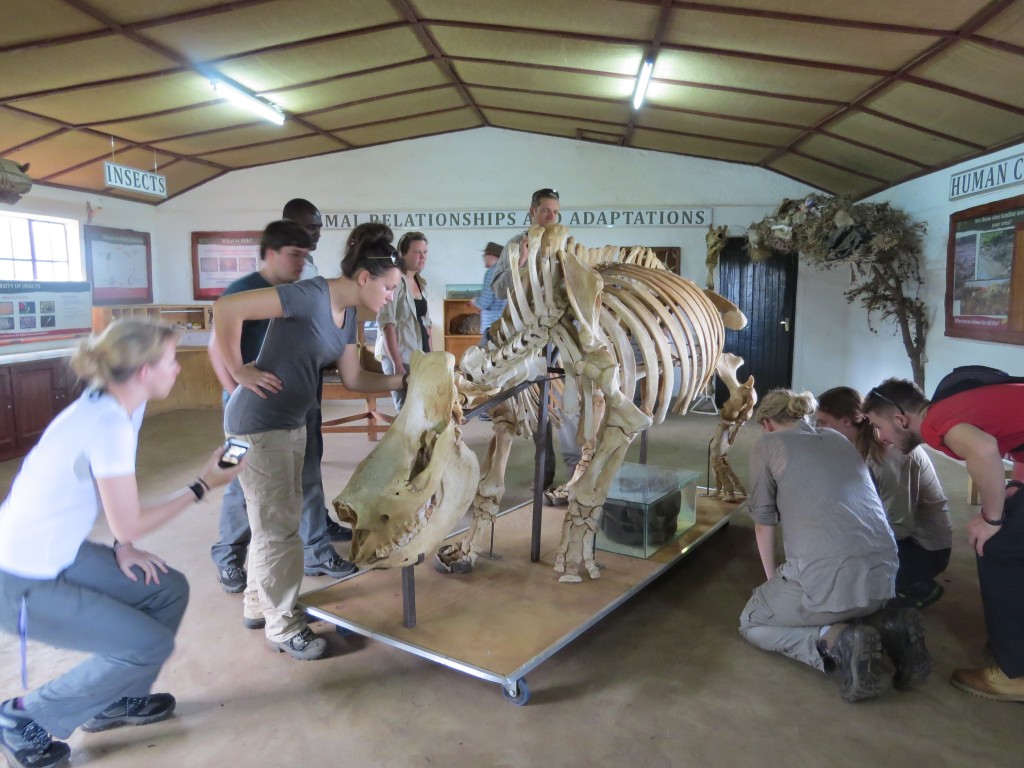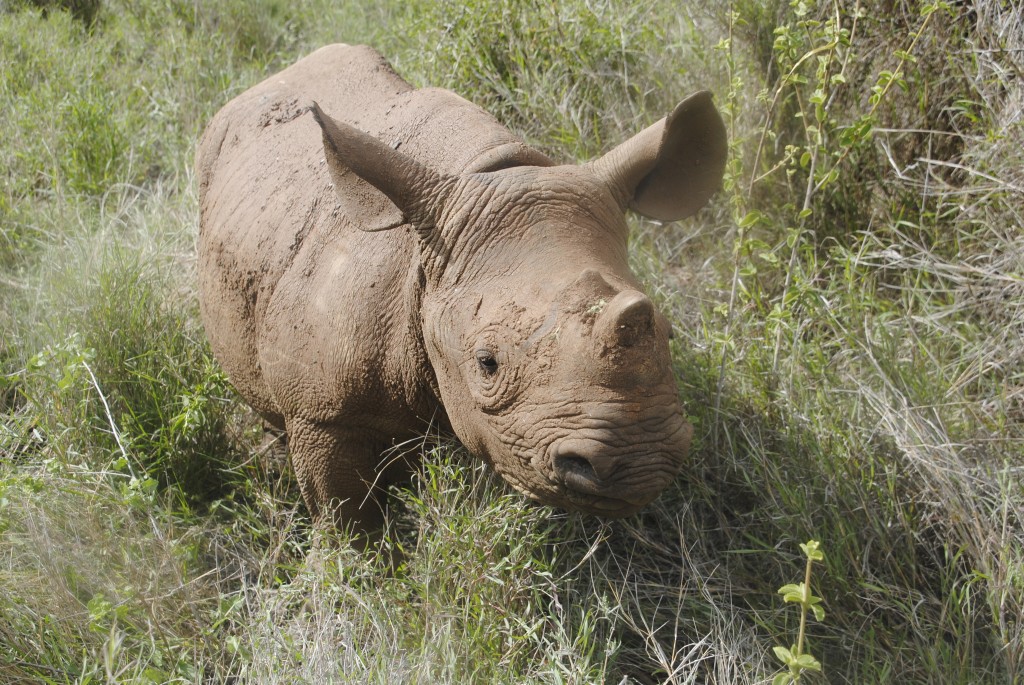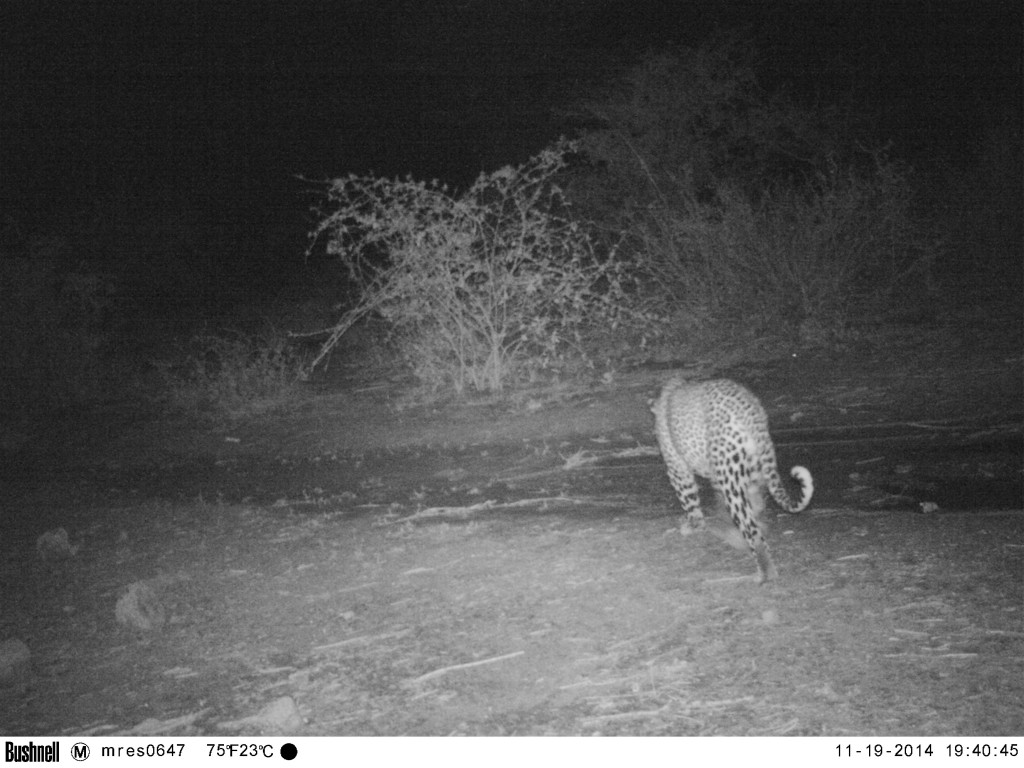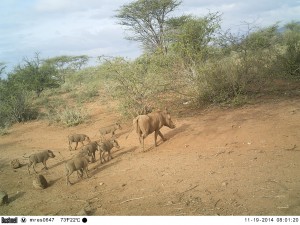The journey begins: Lewa Wildlife Conservancy (Days 1-4)
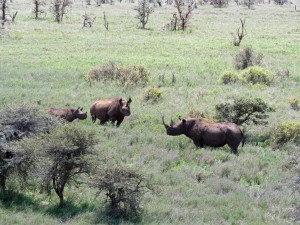 For some of us, this was our first time in Africa, and the range of wildlife that greeted our arrival to Lewa Wildlife Conservancy certainly did not disappoint! Our first task on arrival was to set up camp at Marwell’s research base, fondly known as our ‘home away from home’ for the majority of our stay. Heading out on our first game drive, we were incredibly lucky to see three of the big five; Cape buffalo Syncerus caffer, lion Panthera leo and black rhino Diceros bicornis. Back at camp we got straight to work getting to grips with distance software in preparation for our distance sampling survey the following day.
For some of us, this was our first time in Africa, and the range of wildlife that greeted our arrival to Lewa Wildlife Conservancy certainly did not disappoint! Our first task on arrival was to set up camp at Marwell’s research base, fondly known as our ‘home away from home’ for the majority of our stay. Heading out on our first game drive, we were incredibly lucky to see three of the big five; Cape buffalo Syncerus caffer, lion Panthera leo and black rhino Diceros bicornis. Back at camp we got straight to work getting to grips with distance software in preparation for our distance sampling survey the following day.
Bright and breezy, after a delicious spread of breakfast, we were ready to tackle our first day in the field. Following a briefing from Dr. Zeke Davidson (one of Marwell’s field biologists) giving us tips on animal tracks and species identification, we set off in two teams in a 4×4 vehicle convoy to conduct distance sampling survey. We used a range of equipment including a rangefinder, compass, GPS unit and binoculars to collect data along three transects within Lewa.
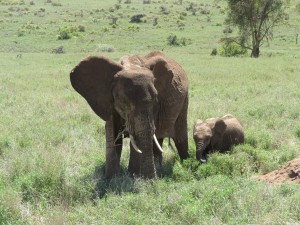 During the survey we saw an exciting range of species, including our fourth of the big five – African elephants Loxodonta! Later that evening, we analysed the data from the survey using distance software which was very challenging but gave us some extremely rewarding results. Over dinner, we watched a fascinating documentary on Kuruwitu Community Conservancy, which gave us an insight into real-life, community-based conservation in action.
During the survey we saw an exciting range of species, including our fourth of the big five – African elephants Loxodonta! Later that evening, we analysed the data from the survey using distance software which was very challenging but gave us some extremely rewarding results. Over dinner, we watched a fascinating documentary on Kuruwitu Community Conservancy, which gave us an insight into real-life, community-based conservation in action.
The next morning, after packing up camp and loading the 4×4’s we had a very inspirational visit to Lewa’s Education Centre, which displays various interesting exhibits including a rhino skeleton, a taxidermy lion, and a large mural comparing a healthy ecosystem with a degraded ecosystem.
Next stop: Kalama Community Wildlife Conservancy (Days 4-6)
Kalama Community Wildlife Conservancy is an area of land directed by the local community towards effective livestock grazing and co-habitation of wildlife. After arriving at our campsite alongside a dry riverbed, we pitched our tents and took a walk along the riverbed, studying the elephant, giraffe and hyena tracks that we found along the way. One highlight was discovering freshly dug holes created by elephants accessing the water deep beneath the surface of the riverbed. Later that day we set up camera traps along the riverbed and by a separate watering hole in the hope of capturing wildlife using these resources. In order to discern the best locations to place the camera traps, we analysed animal tracks around the two sites. That night we listened to elephants passing just 100m away from our camp whilst we rested in our tents.
The next day, we carried out a vegetation survey using a technique that has been developed so that it can be easily carried out by residents of the local communities. This simple method is very effective in capturing the general plant and soil composition and any changes over time. Vegetation cover and composition is indicative of past and current management of the land and is therefore a vital indicator of wildlife and ecosystem health. Later that evening we gathered around a bonfire on the riverbed and enjoyed good food whilst listening to hyenas calling in the distance.
Back to: Lewa Wildlife Conservancy (Days 6-8)
On arrival back on Lewa, we set up camp for the third time before visiting Lewa’s three hand-reared black rhinos, which was an incredible experience and a definite highlight for all of us. Unfortunately, due to severe flooding in the area (luckily our tents kept us dry!) we were confined to camp for the rest of the day. This gave us the opportunity to analyse the camera trap data from the survey that we had conducted at Kalama Community Wildlife Conservancy. We were extremely excited to discover photos of elephants, Grevy’s zebra Equus grevyi, a black-backed jackal Canis mesomelas, spotted hyena Crocuta crocuta, a warthog Phacochoerus africanus family, dik-diks Madoqua sp. and even a leopard Panthera pardus pardus (our elusive fifth species of the Big Five)!
The next morning, we were given a series of interesting presentations from wildlife conservationists at the research camp about the status of Grevy’s zebra on Lewa and about the applications of the Spatial Monitoring and Reporting Tool in wildlife conservation. Afterwards, we learned the extent of the damage caused by the rain but were still lucky enough to see a captivating demonstration by the dog-tracking unit before they set off to support the local communities after the floods. Sadly, as the flooding had swamped the roads, we were unable to drive any further around Lewa and so we couldn’t put into practice our animal behaviour techniques, radio tracking skills or assist in Lewa’s regular foal-patrol.
Final stop: El Karama Cattle Ranch (Days 8-10)
Our final stop of the trip was El Karama Cattle Ranch, which is a commercial cattle ranch that is run with wildlife conservation in mind. Change of management style aside, the differences between Lewa and El Karama were obvious; the bush was much denser and more diverse, which resulted in the huge array and abundance of large mammals that we saw. Highlights included the first sighting of a red hartebeest Alcelaphus caama, a herd of elephants, and so many reticulated giraffes Giraffa camelopardalis reticulata!
Setting up camp for the final time was interesting, with much harder ground and hotter sun, despite the fact that by now, we were well practiced. A few out-of-shape tent pegs later, we ventured off over the hill to survey our surroundings, which included a river with some rapids, apparently often frequented by a male hippo Hippopotamus amphibius, and some lovely views. As the sun went down, the guards built us a fire to fuel the evening and Moses gave us a fascinating insight into life as a Moran, a traditional warrior stage that all Maasai boys pass through on their way to manhood, in Kenya. Our cultural evening continued with Big Papa teaching us the traditional Kenyan Hakuna Matata (a little different to what we’d been taught by Disney!):
http://www.youtube.com/embed/tDaiTMA0TKo
Jambo, Jambo Bwana – Hello, Hello Sir,
Habari gani – How are you,
Mzuri sana – Very fine.
Wageni, mwakaribishwa – Foreigners, you’re welcome,
Kenya yetu Hakuna Matata – In our Kenya there is no problem.
Kenya nchi nzuri – Kenya is a beautiful country,
Hakuna Matata – There is no problem.
Nchi ya maajabu – A wonderful country
Hakuna Matata – There is no problem.
Nchi yenye amani – A peaceful country,
Hakuna Matata – There is no problem.
Hakuna Matata – There is no problem,
Hakuna Matata – There is no problem.
Watu wote – Everybody,
Hakuna Matata – There is no problem,
Wakaribishwa – Are welcome,
Hakuna Matata – There is no problem.
The next morning we went to meet the cattle at their boma (a lion proof area they stay in at night), and were met by Bella, their farmer, who explained the management practices in place at El Karama and provided a brief history of the ranch. After meeting the cattle we returned to our camp where we had a quick lesson in bush mechanics, including how to change a tyre, but this ended prematurely when once again we were visited by heavy rains. After waiting for the rains to pass, we then went on a walk around El Karama – seeing wildlife on foot was definitely a unique and incredible experience. Our final night in Kenya was spent under the stars, sitting around a campfire listening to music and enjoying the atmosphere.
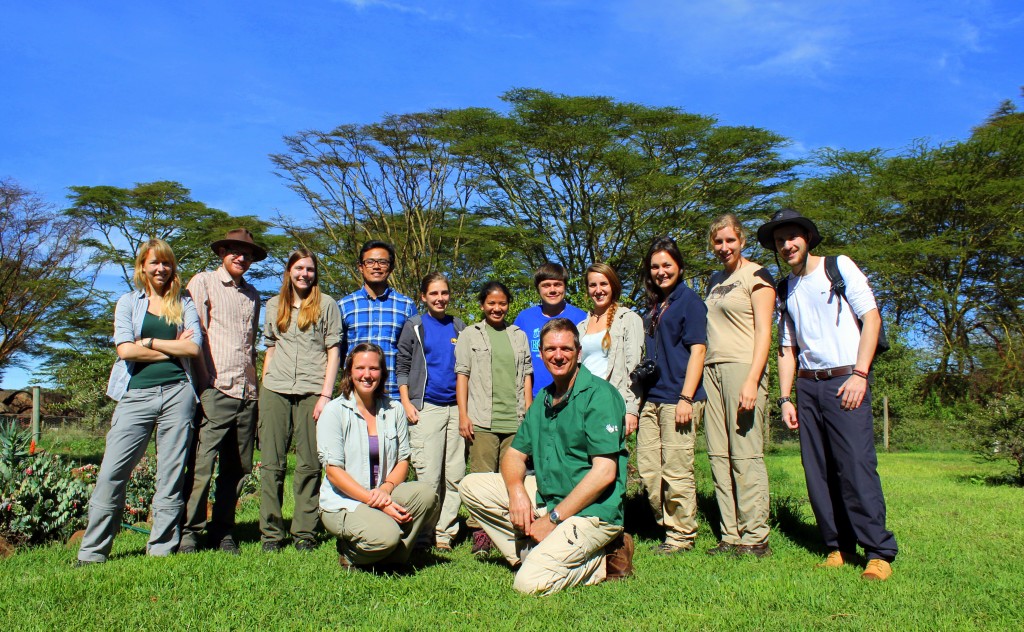
From left to right, back to front: Kat, Dan, Kristen, Faisal, Beth, Suren, Tom, Holly, Kezia, Aimee, Andrea, Laura and Zeke
